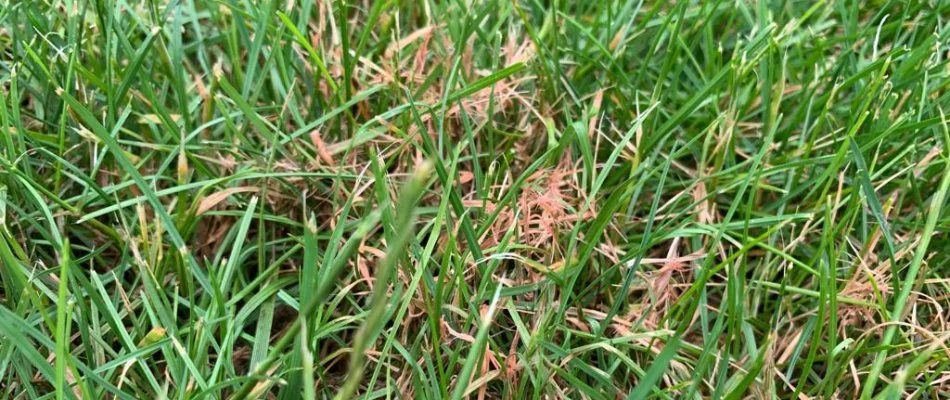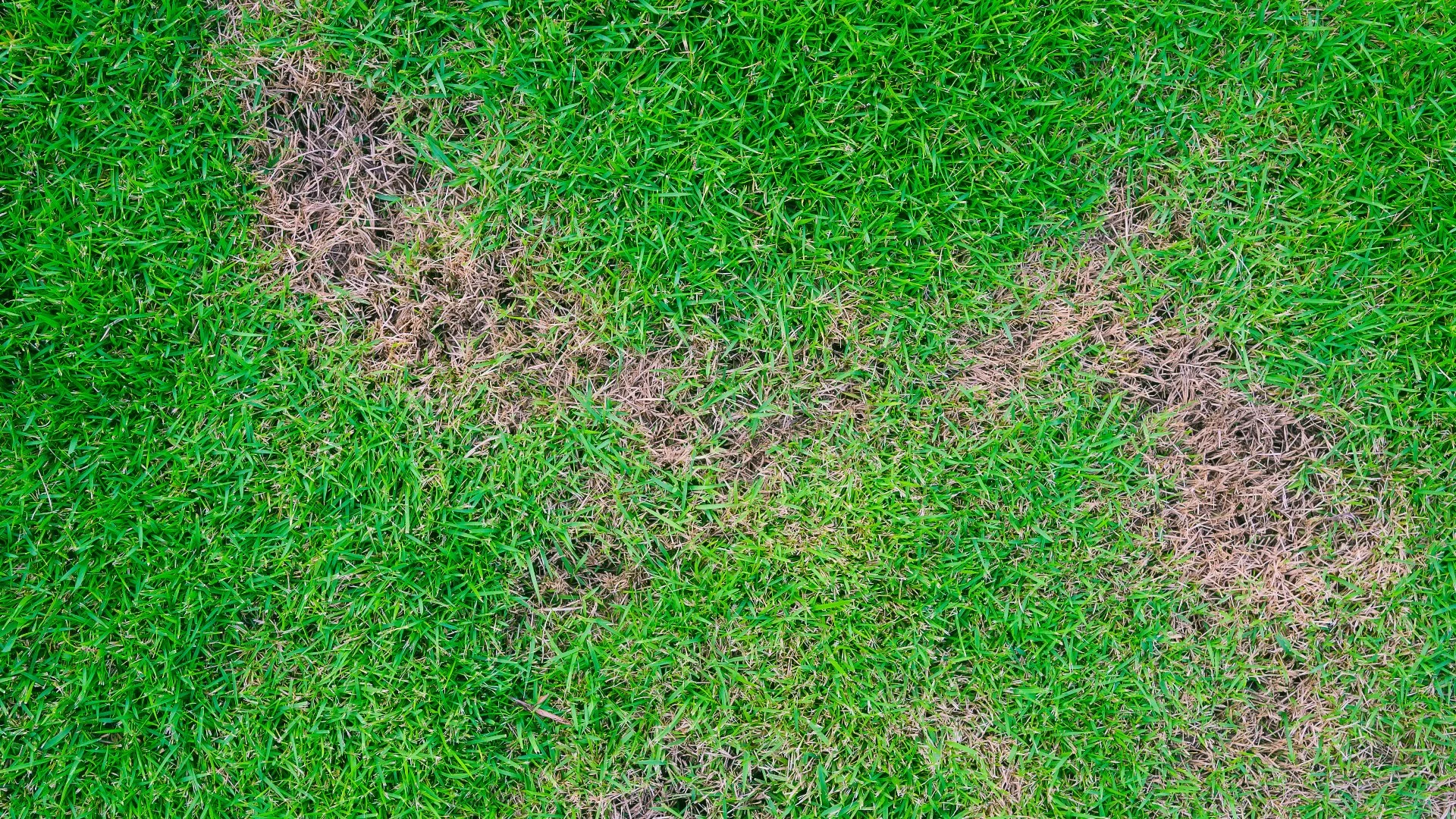Red thread is a common fungal disease that damages lawns in Ohio. It causes red or pink spots to form on grass blades, often merging to create patchy areas. Visible threads or strands indicate the presence of the fungus. Professional assistance is recommended for effective treatment due to the disease's persistence. Prevention involves proper watering (deep and infrequent), mowing at the right height, balanced fertilization, and aeration to enhance root health and minimize moisture. Following these practices and promptly addressing indicators of red thread helps maintain a healthy, vibrant lawn that is resistant to fungal diseases.
What is red thread and how can you identify it?

Red thread is a common lawn disease caused by a fungal infection. It appears as small patches or areas of turf that have a reddish or pinkish color, hence the name "red thread." These patches are usually circular or irregular in shape and can range from a few inches to several feet in diameter. Additionally, you may notice thin, thread-like structures (sclerotia) extending from the blades of grass, giving the affected areas a web-like appearance.
To identify red thread, closely examine your lawn for these distinct patches and the presence of the reddish or pinkish color. If you observe these symptoms, it is likely that your lawn is affected by red thread disease. Proper identification is crucial to ensure appropriate treatment and prevent further spread of the disease.
Red thread should always be treated by a knowledgeable professional.

Treating red thread disease is best left to knowledgeable professionals due to several reasons. Firstly, professionals have the expertise to accurately diagnose the disease and distinguish it from other lawn issues.
Secondly, professionals have access to specialized fungicides that are effective in combating red thread. They know the appropriate application methods and timing to target the fungal infection effectively. They can also recommend appropriate cultural practices, such as proper watering and mowing techniques, to support the recovery and prevent future outbreaks.
Lastly, professionals can assess the overall health of your lawn and identify any underlying factors that may contribute to red thread disease. They can address issues such as nutrient deficiencies or soil imbalances, to improve the overall health and resilience of your lawn.
Regular lawn care practices can help prevent red thread and other lawn diseases.
Implementing regular lawn care practices is essential for preventing red thread disease and maintaining a healthy, disease-resistant lawn. Firstly, proper mowing is crucial. Set your mower blades to the appropriate height and avoid cutting the grass too short, as this weakens the turf and makes it more susceptible to diseases like red thread. Secondly, ensure adequate and consistent watering. Watering deeply and infrequently can help promote deep root growth. Furthermore, regular fertilization can ensure that your lawn receives the necessary nutrients for healthy growth. Balanced nutrition strengthens the turf and makes it more resilient to future diseases.
Overwatering, or allowing your lawn to remain excessively wet for long periods, creates a favorable environment for fungal diseases to develop.
Give us a call today and enroll in our lawn disease control service.
Don't let lawn diseases like red thread mar the beauty of your outdoor space. At Free Spray Lawn Care, we offer a lawn disease control service that includes multiple treatments of our preventative fungicide to prevent diseases like red thread from ever infecting your turf. We offer this service to residential and commercial property owners in Mansfield, Wooster, Strongsville, and throughout the surrounding areas of Ohio. Give us a call today at 419-529-5296 to schedule our lawn disease control service and bid farewell to red thread and other unsightly lawn diseases.



Comments (0)
Thanks for your comment!
Thanks for your feedback! Your comments have been successfully submitted! Please note, all comments require admin approval prior to display.
Error submitting comment!
There is a problem with your comment, please see below and try again.